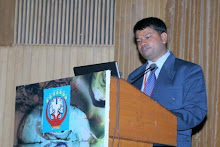The history of the naxal movement is from that of an agrarian unrest to ideologically driven violence against the State. Naxals were not protagonists of liberal democracy. The naxalite leadership, which was mostly non-adivasi, had managed to superimpose their ideology on the disaffection of the tribal people. This succeeded because the insurgency had considerable support among the dalits and adivasis. And thats merely because of ignorance of the establishment! They have not only fueled it, they have allowed it to grow to this size.
Mainstream political parties had found it expedient to seek naxal support for narrow political gains by giving them concessions while in power and money during elections. Local construction contratcors and buisenessmen all have used them on and off for their narrow gains . . . Naxalism, if its a monster threatenning us, its we who have created them!
Policies
Despite considerable emphasis being placed on tribal rights and governance in the 5th and 6th schedules, there has been no serious effort in that direction. The national policy on tribals is still in its draft form and the cabinet committee on tribal affairs has been ineffective. The ministry of tribal affairs and its tribal area plans has been ignored at State and Central levels. The official and ministerial postings in the region or the ministry are considered as punishment postings with 40-50 % of the posts in these areas remaining vacant.The oversight of the Central government, which was to happen through Governors, has not happened and it has been a ’live and let live’ policy. The crucial role of the Governor to analyse and modify any relevant legislation to suit the tribal areas, and recommend changes has not been fulfilled. Annual reports has not been presented, and the Governor has not been provided with the wherewithal to discharge this responsibility. Despite co-opted tribal members in the parliament, there has been no directives or discussions. Article 275(2) makes reference to the powers of Central and State governments for tribal development and welfare, including provision of funds, but no funds has been provided. Section 4 of the Forest Act 1927 and the issue of eminent domain in land acquisition further are complicated. Model for development set in the country has multi national corporations exerting far too much influence on formulation of national policy.
Role of Corporates
Examples of several companies having forest based industries paying the naxalites for protection are obvious. National Mineral Development Corporation, a PSU, is a big confusion in itself. 100% of mineral oil rights are under tribal ownership in countries like Canada. In a stark contrast, in India 26% proposed by the Planning Commission in India was rejected by the CII.
And then few half baked people brand the menace of Naxal - tribal coperation as continuation of the Aryan - Dravidian struggle!
Tribes are simple straightforward people . . . easy to convince . . . they are patriots for sure. In fact they might not be even knowing what patriotism means. One of my journalist friend said that they did not know why and how a female becomes pregnant? How can they be a rebel?
Friday, December 24, 2010
Subscribe to:
Post Comments (Atom)

No comments:
Post a Comment